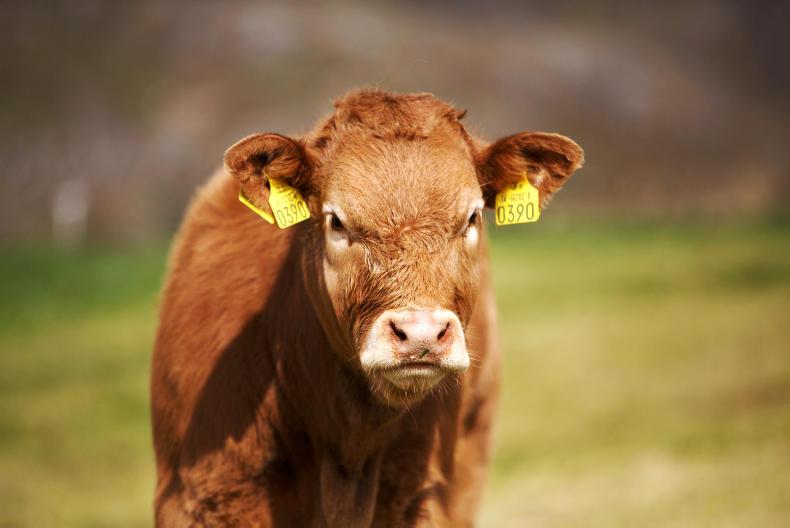Income on suckler farms increased by 2% in 2016, which is largely down to an increase in support payments of 11%, according to the 2016 Teagasc National Farm Survey.
This increase can be attributed to payments received under the Green Low-carbon Agri-Environment Scheme (GLAS) and Beef Data and Genomics Programme (BDGP).
There were approximately 19,185 cattle rearing farms with an average income of €12,908 in 2016. In terms of the most popular production system, suckler cow production proves the most dominant enterprise among these farms.
Prices
Last year saw prices for calves and young cattle declined by approximately 10%, which resulted in cattle output value net of coupled subsidies down 5% despite a rise of 3% in cattle numbers.
Costs
Total farm costs remained unchanged in 2016. Direct costs increased by an average of 3% which is put down to a number of factors including an increased expenditure on feed. This increase has been balanced by lower overhead costs in the sector.
The average gross margin per hectare on suckler farms was €754 in 2016. This included a Basic Payment of €258/ha.
Cattle other farm systems prove to be the most popular across the country with approximately 26,433 farms. Cattle fattening dominates this sector.
These farms had an average income of €16,887 in 2016. This is a 3% increase on 2015 and is based primarily around BPS and GLAS.
The average gross margin per hectare on these farms was €905 in 2016 which included a Basic Payment of €328/ha.
Costs
Overall, there was an increase in total costs for the average farm of 2%. Direct production costs were unchanged in 2016 on the average farm with decreases in feed and fertiliser expenditure offset by increases in other direct cost categories.
The increase in total costs was a direct result of a 4% increase in overhead costs.
Tillage farms receive highest direct payments
Average farm incomes down 9% in 2016
Income on suckler farms increased by 2% in 2016, which is largely down to an increase in support payments of 11%, according to the 2016 Teagasc National Farm Survey.
This increase can be attributed to payments received under the Green Low-carbon Agri-Environment Scheme (GLAS) and Beef Data and Genomics Programme (BDGP).
There were approximately 19,185 cattle rearing farms with an average income of €12,908 in 2016. In terms of the most popular production system, suckler cow production proves the most dominant enterprise among these farms.
Prices
Last year saw prices for calves and young cattle declined by approximately 10%, which resulted in cattle output value net of coupled subsidies down 5% despite a rise of 3% in cattle numbers.
Costs
Total farm costs remained unchanged in 2016. Direct costs increased by an average of 3% which is put down to a number of factors including an increased expenditure on feed. This increase has been balanced by lower overhead costs in the sector.
The average gross margin per hectare on suckler farms was €754 in 2016. This included a Basic Payment of €258/ha.
Cattle other farm systems prove to be the most popular across the country with approximately 26,433 farms. Cattle fattening dominates this sector.
These farms had an average income of €16,887 in 2016. This is a 3% increase on 2015 and is based primarily around BPS and GLAS.
The average gross margin per hectare on these farms was €905 in 2016 which included a Basic Payment of €328/ha.
Costs
Overall, there was an increase in total costs for the average farm of 2%. Direct production costs were unchanged in 2016 on the average farm with decreases in feed and fertiliser expenditure offset by increases in other direct cost categories.
The increase in total costs was a direct result of a 4% increase in overhead costs.
Tillage farms receive highest direct payments
Average farm incomes down 9% in 2016






 This is a subscriber-only article
This is a subscriber-only article










SHARING OPTIONS: